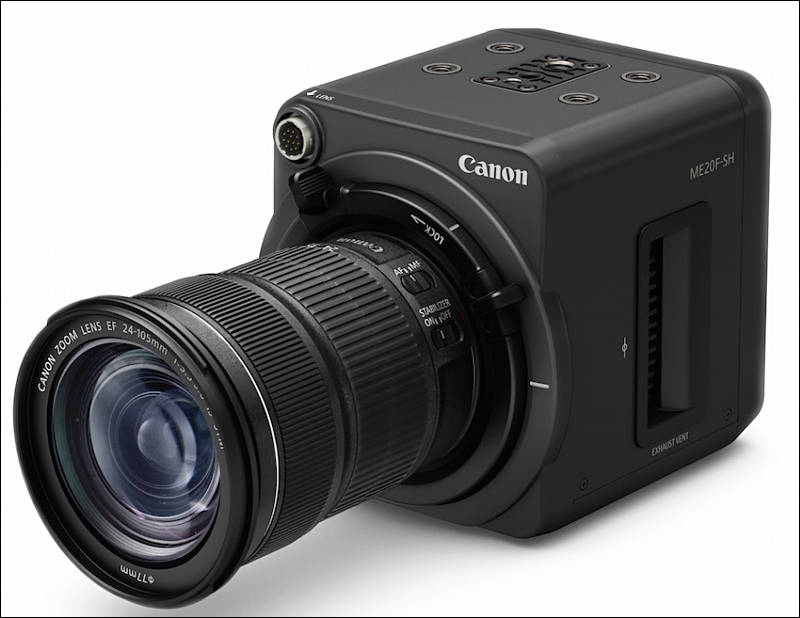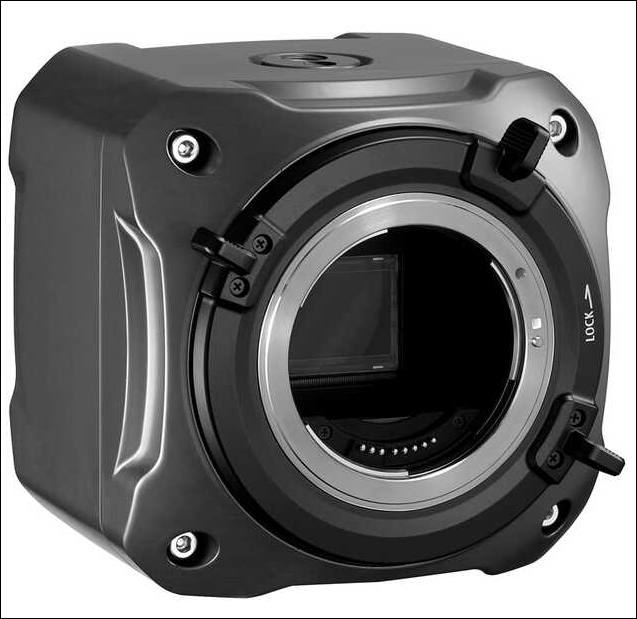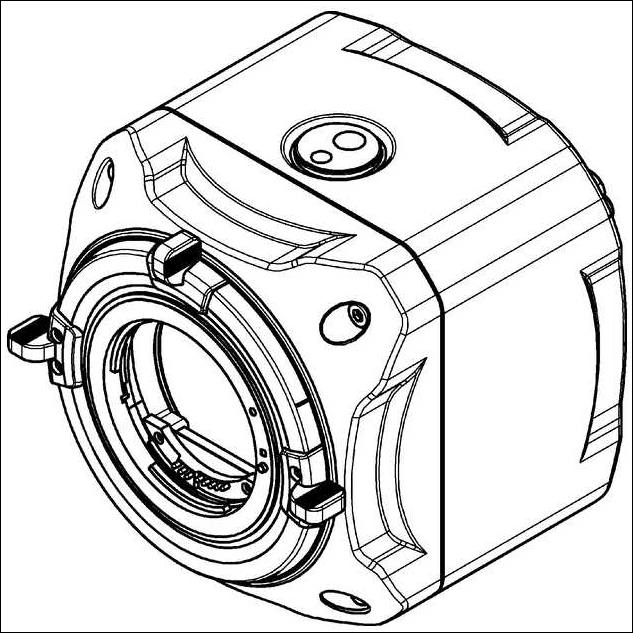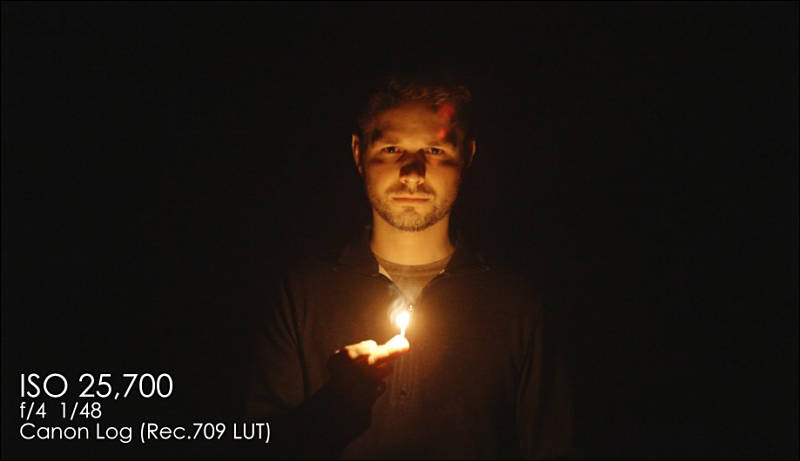
It allows to keep PV going, with more focus towards AI, but keeping be one of the few truly independent places.
-

- 2.26Mp CMOS sensor
- ISO 4000000 option
- Canon Log and Wide DR modes
- EF mound
- Built-in ND
- Lots of ports
- $20,000 at http://www.bhphotovideo.com/c/product/1187825-REG/canon_1002c002_me20f_sh_multi_purpose_camera.html

 z_laing21.jpg800 x 618 - 55K
z_laing21.jpg800 x 618 - 55K -
PR
Canon U.S.A. Inc., a leader in digital imaging solutions, today has introduced the Company’s first multi-purpose camera, the new ME20F-SH, which delivers exceptionally high sensitivity to capture Full HD video with a minimum subject illumination of less than 0.0005 lux1 (at maximum 75 dB gain setting, equivalent to an ISO sensitivity of over 4,000,000). Nighttime surveillance and security, cinematic production, reality television, and nature/wildlife documentaries are just some of the ME20F-SH’s many possible usage applications. With the ability to capture color video in extreme low-light conditions and its simplistic and versatile design, the ME-20F-SH Multi-purpose Camera can be easily incorporated into existing infrastructures and systems to provide high-quality video capture even where subjects might not be seen with the naked eye.
Canon’s new multi-purpose camera employs an enhanced version of the 35mm full-frame CMOS sensor for Full HD video use that was originally developed by the Company in 20132. Its compact, modular body design allows easy custom configurations for diverse usage scenarios. While capturing video in extreme low-light conditions often requires the use of infrared illumination (a technique that only yields video in black and white), the ME20F-SH camera achieves impressive high-sensitivity performance enabling the capture of color Full HD video with reduced noise in low-light conditions without the need for infrared illumination.
Ultra-High-Sensitivity CMOS Sensor Enables Color Video Capture in Extreme Low-Light Conditions
The ME20F-SH camera’s CMOS sensor has pixels measuring 19 μm square3, which is more than 5.5 times the surface area of the pixels on the CMOS sensor featured in select top-of-the-line interchangeable lens cameras4. Furthermore, the sensor’s pixels and readout circuitry make use of Canon proprietary technologies to achieve both reduced noise and exceptionally high sensitivity on subjects with a minimum illumination of less than 0.0005 lux. This multi-purpose camera allows users to discern subjects under even some of the dimmest lighting conditions, such as environments lit by artificial illumination or under a moonless night sky. Furthermore, similar to Canon’s Cinema EOS System of professional digital cinematography cameras, the ME20F-SH camera includes Canon Log and Wide DR, which make possible a wide dynamic range, delivering high-image-quality video results across a range of illumination environments, from low- to brightly lit conditions
Canon’s Diverse Interchangeable EF Lens Lineup Enables Wide Range of Imaging Possibilities
The new ME20F-SH employs the same EF mount (Cinema Lock type) as Canon’s SLR cameras and Cinema EOS System-series of professional digital cameras, allowing users to make use of the Company’s extensive lineup of interchangeable EF lenses5. By letting users select the ideal lens based on their shooting or application requirements, taking into consideration such factors as angle of view and level of brightness, this multi-purpose camera facilitates a wide spectrum of imaging possibilities.
Supports various standard video-recording interfaces
Employing output-only 3G/HD-SDI and HDMI terminals, Canon’s ME20F-SH camera enables users working on location to output video via a single cable to a variety of peripheral equipment, including external recorders and monitors. Equipped with a φ2.5mm stereo mini-jack and a round 8-pin jack for RS-422, the multipurpose camera is capable of connecting with Canon’s RC-V100 Remote Controller (released in June 2014; sold separately)6. By allowing users to operate the camera or change settings from a remote location, the camera facilitates video capture from inaccessible locations as well as fixed-point surveillance. Furthermore, a φ3.5mm stereo mini-jack allows the camera to connect with an external microphone, enabling users working on location to output audio and video signals to connected peripheral equipment.
The Canon ME20F-SH is expected to be available in December 2015 at a suggested retail price of $30,000.
-
@joethepro 1080p24 and 60.
-
ISO 4,000,000 sounds like a lot, but that's really only about 3 1/2 stops faster than the top ISO on the A7s which costs about 1/15 the amount and doesn't need active cooling (I'm assuming there's a fan of some sort inside the camera based on the "exhaust vent" on the side)... it'll be interesting to see how the A7s Mark II compares with this ISO and price-wise.
-
Is there some actual sample video? Not like the 640x360 joke above?
Where's the impressive 1080p footage of colorful, detail rich, moving objects that could easily proof the specific strengths of such a camera?
What I've seen so far wouldn't prompt me to pay 27k.
However, if the image was as good as touted, this camera would certainly become a favourite one for scientific underwater vessels.
-
Perseid Meteor Shower
-
New firmware
Firmware Version 1.0.3.1.00 incorporates the following enhancements.
- The following features are enabled for the CN-E18-80mm and T4.4 L IS KAS S:
- Saving and displaying metadata, such as the model name and the focal distance of the lens when attached.
- Support for Peripheral Illumination Correction.
- Manual Iris control via the camera’s joystick.
- Control of focus, zoom and iris using the separately-sold Remote Controller RC-V100.
- One shot autofocus.
- Automatic aperture and push auto iris functions.
- Operation of REC start/stop by the separately-sold ZSG-C10.
- Three camera modes have been added:
- Tv: Shutter speed is selectable. Iris, Gain and ND Filter* are set automatically.
- Av: Iris is selectable. Shutter speed, Gain and ND Filter* are set automatically.
- AGC: Shutter speed and Iris are selectable. Gain and ND Filter* are set automatically.
- ND Filter can also be set manually.
- Adds Peripheral Illumination Correction for the following lenses:
- EF 100-400mm f/4.5-5.6L IS II USM
- EF 35mm f/1.4L II USM
- EF 24-105mm f/4L IS II USM
- Adds chroma-key correction function.
- Adds three white balance modes when the camera is set to Auto: custom White Balance Set, Preset and Color temperature.
- Adds 25PsF on output format.
- Adds [59.94P(i)]* and [50.00P(i)]* output setting for Monitor terminal.
- When the frame rate is set to 59.94P (NTSC) or 50.00P (PAL), the 3G/HD-SDI 1 / MONITOR terminal can be set to output interlaced signal.
- The following features are enabled for the CN-E18-80mm and T4.4 L IS KAS S:
-
Canon U.S.A., Inc., a leader in digital imaging solutions, is proud to congratulate the team behind the National Geographic’s live television special “Earth Live”. The two-hour broadcast featured a live-production first, by using Canon’s ME20F-SH Multi-Purpose Camera along with a variety of Canon lenses, including the CINE-SERVO 50-1000mm T5.0-8.9 EF to show television viewers live images of illusive nocturnal wildlife from around the world at night, in color, without using artificial lighting. Hosted by award-winning actress Jane Lynch and award-winning television personality Phil Keoghan, the unprecedented two-hour event gave viewers an unfiltered, real-time broadcast feed to see Earth’s wildlife in various natural habitats with the use of 51 cameras shooting simultaneously in 25 different locations across six continents. The show premiered on National Geographic, Nat Geo WILD and Nat Geo MUNDO on Sunday, July 9, and aired in 171 countries and 45 languages.
Working closely with National Geographic, executive producer Al Berman’s idea for “Earth Live” involved several locations that were in total darkness during the live production and those dark locations would either require lights that would disturb wildlife, or the use of infrared or thermal cameras, which didn’t suit Berman’s idea. It wasn’t until 2015 when Canon debuted the ME20F-SH Multi-Purpose Camera that Berman saw the opportunity to broadcast undisturbed nocturnal wildlife in color. The announcement of this revolutionary four million ISO, full-frame sensor camera that can shoot full-color video in extreme low-light conditions, immediately caught the attention of Berman, who approached Canon U.S.A. with his idea. The Company’s technical support team worked closely with Berman and his crew to provide and test equipment to help bring this concept to life.
“The Canon ME20F-SH camera made it possible to do the show, and we were awed by the footage this camera was able to capture in challenging low-light environments,” said Berman. “Through Canon’s ongoing, hands-on support, viewers were able to see Earth’s greatest wildlife and further deepen their understanding of the world.”
The incredible ISO capability of the ME20F-SH allowed for viewers to virtually see in the dark and watch—in full color—live wildlife lit only by the moon. Dubbed the “Canon Moon Cam” by cinematographers during the live production, filmmakers were awed by the footage they were able to capture and broadcast in color around the world.
“Using Canon’s ME20F-SH allowed viewers to see these marvelous creatures in their natural environment, opening a portal into this beautiful unknown world,” said Yuichi Ishizuka, president and COO, Canon U.S.A., Inc. “We feel honored that National Geographic and Mr. Berman called on Canon to be a part of such a pioneering and magnificent piece of work, allowing the world to see what has never been seen before. This kind of innovation is the bedrock of our company, and we look forward to more opportunities to show the power of imaging.”
“Earth Live was an ambitious television special that allowed us to go beyond what we thought was possible” said Tim Pastore, president, original programming & production, National Geographic. “The footage and images deeply resonated with our audience, and we couldn’t be happier that Canon was a part of the incredible moment for our network and in television history.”
The broadcast featured live feeds from nine Canon ME20F-SH cameras positioned in the parts of the world that were in nighttime during the live broadcast. Additional Canon equipment used by the National Geographic Channel for the television special included the CN-E30-300mm T2.95-3.7 L SP Cinema Zoom Lens and the CINE-SERVO 17-120mm T.2.95-3.9 PL.
“Earth Live” is produced by Bunim-Murray Productions, Berman Productions and Plimsoll Productions for National Geographic. Al Berman, Gil Goldschein, Andrew Jackson, Martha Holmes and James Smith are executive producers. For National Geographic, Michael J. Miller is the executive producer; Kevin Tao Mohs is vice president, production and development; and Tim Pastore is president of original programming and production.
-
New firmware
- Support for the color matrix function has been added.
- Support for the color correction function has been added.
- The following features are enabled for the CN-E18-80mm T4.4 L IS KAS S or CN-E70-200mm T4.4 L IS KAS S when “NU Protocol” is selected:
- Focus position control
- Zoom position control
-
Possible update coming



 sa10538.jpg637 x 619 - 50K
sa10538.jpg637 x 619 - 50K
 sa10539.jpg633 x 633 - 80K
sa10539.jpg633 x 633 - 80K -
Canon U.S.A., Inc., a leader in digital imaging solutions, today announced that its parent company Canon Inc. will be recognized at the 71st Annual Technology & Engineering Emmy® Awards for the ME20F-SH Ultra-High Sensitivity Full-HD Camera. Presented by the National Academy of Television Arts & Sciences (NATAS), the Technology & Engineering Emmy® Awards honor development and innovation in broadcast technology and recognize companies, organizations and individuals for breakthroughs in technology that have a significant effect on television engineering. The Technology & Engineering Emmy® Awards will be presented on April 19th, 2020, during NAB 2020 in Las Vegas.
“We are grateful to receive this esteemed recognition for our revolutionary ME20F-SH camera,” said Kazuto Ogawa, president and COO, Canon U.S.A. “This marks Canon’s fifth Emmy, an accomplishment we are immensely proud of. This award is a testament to the company’s commitment and vision for developing imaging tools that help creative professionals see what was previously considered impossible.”
Canon’s remarkable ME20F-SH is a multi-purpose camera that can achieve ISO sensitivity of over 4,000,000 and employs an enhanced version of a 35mm full-frame CMOS sensor for Full HD video. Its compact, modular body design allows easy custom configurations for diverse usage scenarios. Since its introduction in July of 2015, this unique camera has been used by visionary cinematographers and productions such as National Geographic’s groundbreaking Earth Live broadcast in 2017. The program aired live video from remote wilderness sites around the world, utilizing the ME20F-SH for the nighttime locations to capture images of nocturnal creatures that would have otherwise gone unseen. While capturing video in extreme low-light conditions often requires the use of infrared illumination (a technique that only yields video in monochrome), the ME20F-SH camera achieves impressive high-sensitivity performance enabling the capture of color Full HD video with reduced noise in low-light conditions without the need for infrared illumination.
The ME20F-SH employs an EF mount, allowing users to make use of the Company’s extensive lineup of interchangeable EF lenses. By letting users select the ideal lens based on their shooting or application requirements, taking into consideration such factors as angle of view and level of brightness, this multi-purpose camera facilitates a wide spectrum of imaging possibilities.
Howdy, Stranger!
It looks like you're new here. If you want to get involved, click one of these buttons!
Categories
- Topics List23,978
- Blog5,724
- General and News1,351
- Hacks and Patches1,153
- ↳ Top Settings33
- ↳ Beginners255
- ↳ Archives402
- ↳ Hacks News and Development56
- Cameras2,363
- ↳ Panasonic991
- ↳ Canon118
- ↳ Sony156
- ↳ Nikon96
- ↳ Pentax and Samsung70
- ↳ Olympus and Fujifilm100
- ↳ Compacts and Camcorders300
- ↳ Smartphones for video97
- ↳ Pro Video Cameras191
- ↳ BlackMagic and other raw cameras117
- Skill1,961
- ↳ Business and distribution66
- ↳ Preparation, scripts and legal38
- ↳ Art149
- ↳ Import, Convert, Exporting291
- ↳ Editors191
- ↳ Effects and stunts115
- ↳ Color grading197
- ↳ Sound and Music280
- ↳ Lighting96
- ↳ Software and storage tips267
- Gear5,414
- ↳ Filters, Adapters, Matte boxes344
- ↳ Lenses1,579
- ↳ Follow focus and gears93
- ↳ Sound498
- ↳ Lighting gear314
- ↳ Camera movement230
- ↳ Gimbals and copters302
- ↳ Rigs and related stuff272
- ↳ Power solutions83
- ↳ Monitors and viewfinders339
- ↳ Tripods and fluid heads139
- ↳ Storage286
- ↳ Computers and studio gear560
- ↳ VR and 3D248
- Showcase1,859
- Marketplace2,834
- Offtopic1,319










